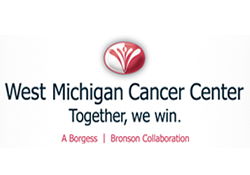Chemotherapy and Radiation Therapy in Treating Patients With Stage II or Stage III Bladder Cancer That Was Removed by Surgery
| Status: | Active, not recruiting |
|---|---|
| Conditions: | Cancer, Cancer, Bladder Cancer |
| Therapuetic Areas: | Oncology |
| Healthy: | No |
| Age Range: | 18 - 120 |
| Updated: | 4/22/2018 |
| Start Date: | December 2008 |
| End Date: | January 2023 |
A Phase II Randomized Study For Patients With Muscle-Invasive Bladder Cancer Evaluating Transurethral Surgery And Concomitant Chemoradiation By Either BID Irradiation Plus 5-Fluorouracil And Cisplatin Or QD Irradiation Plus Gemcitabine Followed By Selective Bladder Preservation And Gemcitabine/Cisplatin Adjuvant Chemotherapy
RATIONALE: Drugs used in chemotherapy, such as fluorouracil, cisplatin, and gemcitabine, work
in different ways to stop the growth of tumor cells, either by killing the cells or by
stopping them from dividing. Radiation therapy uses high-energy x-rays to kill tumor cells.
Giving chemotherapy together with radiation therapy may kill more tumor cells.
PURPOSE: This randomized phase II trial is studying two different chemotherapy and radiation
therapy regimens to see how they work in treating patients with stage II or stage III bladder
cancer that was removed by surgery.
in different ways to stop the growth of tumor cells, either by killing the cells or by
stopping them from dividing. Radiation therapy uses high-energy x-rays to kill tumor cells.
Giving chemotherapy together with radiation therapy may kill more tumor cells.
PURPOSE: This randomized phase II trial is studying two different chemotherapy and radiation
therapy regimens to see how they work in treating patients with stage II or stage III bladder
cancer that was removed by surgery.
OBJECTIVES:
Primary
- To estimate the rate of distant metastasis at 3 years in patients who have undergone
transurethral resection of the bladder tumor for stage II or III muscle-invasive bladder
cancer treated with chemoradiotherapy comprising fluorouracil, cisplatin, and
radiotherapy vs gemcitabine hydrochloride and radiotherapy followed by selective bladder
preservation and adjuvant chemotherapy comprising gemcitabine hydrochloride and
cisplatin.
Secondary
- To estimate the treatment completion rate in these patients.
- To estimate acute and late grade toxicities (≥ grade 3 genitourinary, gastrointestinal,
and hematologic toxicities) of these regimens in these patients.
- To estimate the efficacy of these regimens, in terms of achieving complete response of
the primary tumor, in these patients.
- To estimate the efficacy of these regimens, in terms of preserving the native,
tumor-free bladder 5 years after completion of therapy, in these patients.
- To estimate the value of tumor histopathologic, molecular genetic, DNA content,
metabolomic, and proteomic parameters as possible significant prognostic factors for
initial tumor response and recurrence-free survival.
- To analyze for American Urological Association (AUA) Symptom scores at baseline and at 3
years from patients on both arms.
- To find potentially predictive biomarkers for cystectomy-free survival.
- To find potentially predictive biomarkers for acute and late toxicities.
OUTLINE: This is a multicenter study. Patients are stratified according to tumor stage (T2 vs
T3-4a). Patients are randomized to 1 of 2 treatment arms.
- Induction therapy (weeks 1-4):
- Arm I: Patients receive fluorouracil IV continuously over 72 hours on days 1-3 and
15-17 and cisplatin IV over 1 hour on days 1-3, 8-10, and 15-17. Patients also
undergo radiotherapy twice daily on days 1-5, 8-12, and 15-17.
- Arm II: Patients receive gemcitabine hydrochloride IV over 30 minutes on days 1, 4,
8, 11, 15, 18, 22, and 25. Patients also undergo radiotherapy once daily on days
1-5, 8-12, 15-19, and 22-26.
All patients undergo evaluation of response at 3-4 weeks after completion of induction
therapy. Patients with pT1 or worse tumor response undergo radical cystectomy within 3-8
weeks after response evaluation. Patients with pT0, Ta, or Tis tumor response (at site
distant from original tumor) proceed to consolidation therapy within 7-14 days after response
evaluation.
- Consolidation therapy (weeks 8-10):
- Arm I: Patients receive fluorouracil IV continuously over 72 hours on days 1-3 and
8-10 and cisplatin IV over 1 hour on days 1, 2, 8, and 9. Patients also undergo
radiotherapy twice daily on days 1-5 and 8-10.
- Arm II: Patients receive gemcitabine hydrochloride IV over 30 minutes on days 1, 4,
8, 11, and 15. Patients also undergo radiotherapy once daily on days 1-5, 8-12, 15,
and 16.
Patients proceed to adjuvant therapy 12 weeks after completion of consolidation therapy OR
8-12 weeks after radical cystectomy.
- Adjuvant therapy (weeks 21-33 or 17-29): Patients receive gemcitabine hydrochloride IV
over 30-60 minutes on days 1 and 8 and cisplatin IV over 1 hour on day 1. Treatment
repeats every 21 days for a total of 4 courses in the absence of disease progression or
unacceptable toxicity.
After completion of study therapy, patients are followed every 3 months for 1 year, every 4
months for 1 year, every 6 months for 3 years, and then annually thereafter.
Primary
- To estimate the rate of distant metastasis at 3 years in patients who have undergone
transurethral resection of the bladder tumor for stage II or III muscle-invasive bladder
cancer treated with chemoradiotherapy comprising fluorouracil, cisplatin, and
radiotherapy vs gemcitabine hydrochloride and radiotherapy followed by selective bladder
preservation and adjuvant chemotherapy comprising gemcitabine hydrochloride and
cisplatin.
Secondary
- To estimate the treatment completion rate in these patients.
- To estimate acute and late grade toxicities (≥ grade 3 genitourinary, gastrointestinal,
and hematologic toxicities) of these regimens in these patients.
- To estimate the efficacy of these regimens, in terms of achieving complete response of
the primary tumor, in these patients.
- To estimate the efficacy of these regimens, in terms of preserving the native,
tumor-free bladder 5 years after completion of therapy, in these patients.
- To estimate the value of tumor histopathologic, molecular genetic, DNA content,
metabolomic, and proteomic parameters as possible significant prognostic factors for
initial tumor response and recurrence-free survival.
- To analyze for American Urological Association (AUA) Symptom scores at baseline and at 3
years from patients on both arms.
- To find potentially predictive biomarkers for cystectomy-free survival.
- To find potentially predictive biomarkers for acute and late toxicities.
OUTLINE: This is a multicenter study. Patients are stratified according to tumor stage (T2 vs
T3-4a). Patients are randomized to 1 of 2 treatment arms.
- Induction therapy (weeks 1-4):
- Arm I: Patients receive fluorouracil IV continuously over 72 hours on days 1-3 and
15-17 and cisplatin IV over 1 hour on days 1-3, 8-10, and 15-17. Patients also
undergo radiotherapy twice daily on days 1-5, 8-12, and 15-17.
- Arm II: Patients receive gemcitabine hydrochloride IV over 30 minutes on days 1, 4,
8, 11, 15, 18, 22, and 25. Patients also undergo radiotherapy once daily on days
1-5, 8-12, 15-19, and 22-26.
All patients undergo evaluation of response at 3-4 weeks after completion of induction
therapy. Patients with pT1 or worse tumor response undergo radical cystectomy within 3-8
weeks after response evaluation. Patients with pT0, Ta, or Tis tumor response (at site
distant from original tumor) proceed to consolidation therapy within 7-14 days after response
evaluation.
- Consolidation therapy (weeks 8-10):
- Arm I: Patients receive fluorouracil IV continuously over 72 hours on days 1-3 and
8-10 and cisplatin IV over 1 hour on days 1, 2, 8, and 9. Patients also undergo
radiotherapy twice daily on days 1-5 and 8-10.
- Arm II: Patients receive gemcitabine hydrochloride IV over 30 minutes on days 1, 4,
8, 11, and 15. Patients also undergo radiotherapy once daily on days 1-5, 8-12, 15,
and 16.
Patients proceed to adjuvant therapy 12 weeks after completion of consolidation therapy OR
8-12 weeks after radical cystectomy.
- Adjuvant therapy (weeks 21-33 or 17-29): Patients receive gemcitabine hydrochloride IV
over 30-60 minutes on days 1 and 8 and cisplatin IV over 1 hour on day 1. Treatment
repeats every 21 days for a total of 4 courses in the absence of disease progression or
unacceptable toxicity.
After completion of study therapy, patients are followed every 3 months for 1 year, every 4
months for 1 year, every 6 months for 3 years, and then annually thereafter.
DISEASE CHARACTERISTICS:
- Histologically or cytologically confirmed primary transitional cell carcinoma (TCC) of
the bladder within the past 8 weeks
- Exhibits histological evidence of muscularis propria invasion
- Clinical stage T2-T4a, NX or N0, M0 disease
- TCC involvement of the prostatic urethra allowed provided it was visibly
completely resected AND there is no evidence of stromal invasion of the prostate
- No histologically or cytologically confirmed lymph node metastases
- Radiologic evidence of lymph node positivity allowed provided the lymph node
is further evaluated by lymphadenectomy or percutaneous needle biopsy AND
confirmed to be negative
- No evidence of distant metastases
- Operable disease
- Has undergone transurethral resection of the bladder tumor within the past 8
weeks
- Judged to be a candidate for radical cystectomy
- Adequately functioning bladder after thorough evaluation by an urologist
- No tumor-related hydronephrosis
PATIENT CHARACTERISTICS:
- Zubrod performance status 0-1
- White blood cell count (WBC) ≥ 4,000/mm^3
- Absolute neutrophil count (ANC) ≥ 1,800/mm^3
- Platelet count ≥ 100,000/mm^3
- Hemoglobin ≥ 10.0 g/dL (transfusion or other intervention allowed)
- Creatinine clearance ≥ 60 mL/min
- Serum creatinine ≤ 1.5 mg/dL (serum creatinine ≤ 1.8 mg/dL allowed provided creatinine
clearance is > 60 mL/min)
- Serum bilirubin ≤ 2.0 mg/dL
- Not pregnant or nursing
- Negative pregnancy test
- Fertile patients must use effective contraception
- Able to tolerate systemic chemotherapy combined with pelvic radiotherapy and a radical
cystectomy as determined by the urologist, radiation oncologist, and medical
oncologist
- No other malignancy within the past 5 years except for nonmelanoma skin cancer, stage
T1a prostate cancer, or carcinoma in situ of the cervix
- No severe, active co-morbidities, including any of the following:
- Unstable angina and/or congestive heart failure requiring hospitalization within
the past 6 months
- Transmural myocardial infarction within the past 6 months
- Acute bacterial or fungal infection requiring IV antibiotics
- Chronic obstructive pulmonary disease exacerbation or other respiratory illness
that requires hospitalization or precludes study therapy
- Hepatic insufficiency resulting in clinical jaundice and/or coagulation defects
- AIDS
- No prior allergic reaction to any of the study drugs
PRIOR CONCURRENT THERAPY:
- See Disease Characteristics
- No prior pelvic radiotherapy
- No prior systemic chemotherapy for any cancer
- No concurrent drugs that have potential nephrotoxicity or ototoxicity (e.g.,
aminoglycosides)
- No concurrent intensity-modulated radiotherapy
We found this trial at
11
sites
1055 N Curtis Rd
Boise, Idaho 83706
Boise, Idaho 83706
(208) 367-2121

Saint Alphonsus Cancer Care Center at Saint Alphonsus Regional Medical Center Saint Alphonsus Health System...
Click here to add this to my saved trials
West Michigan Cancer Center In 1994, Borgess Health Alliance and Bronson Healthcare Group opened the...
Click here to add this to my saved trials
Saint Joseph Mercy Cancer Center Saint Joseph Mercy Health System is one of Michigan's most...
Click here to add this to my saved trials
1500 East Medical Center Drive
Ann Arbor, Michigan 48109
Ann Arbor, Michigan 48109
800-865-1125

University of Michigan Comprehensive Cancer Center The U-M Comprehensive Cancer Center's mission is the conquest...
Click here to add this to my saved trials
Click here to add this to my saved trials
1365 Clifton Rd NE
Atlanta, Georgia 30322
Atlanta, Georgia 30322
(404) 778-1900

Winship Cancer Institute at Emory University Winship Cancer Institute of Emory University is Georgia
Click here to add this to my saved trials
St. Agnes Hospital Cancer Center Saint Agnes Hospital is leading Maryland in the battle against...
Click here to add this to my saved trials
Click here to add this to my saved trials
Click here to add this to my saved trials
Click here to add this to my saved trials
Click here to add this to my saved trials


